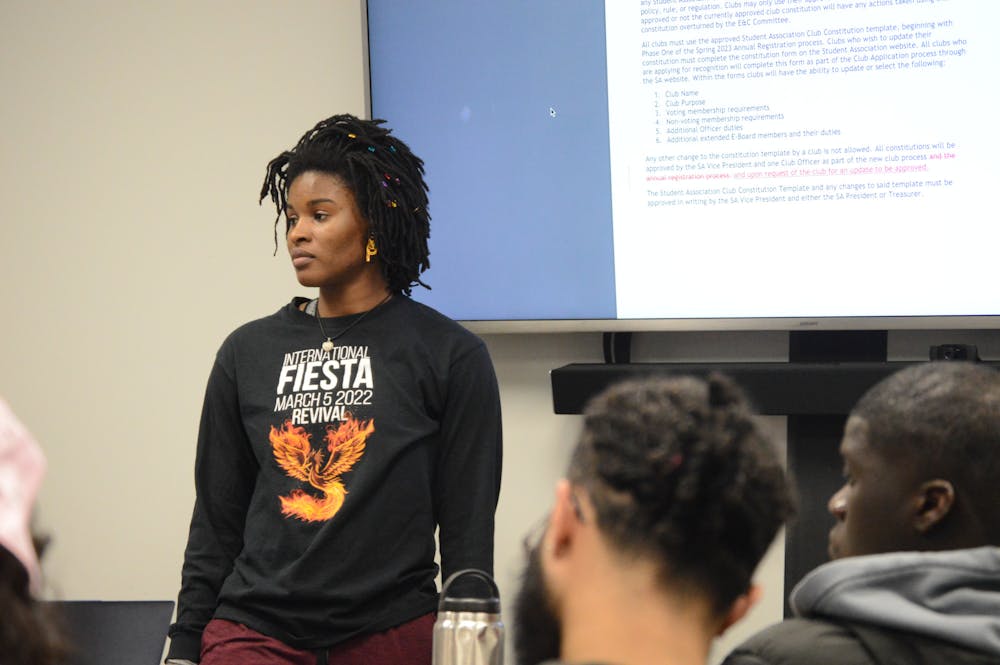The Student Association (SA) Senate adopted a bevy of new policies Wednesday evening that aim to improve club funding allocation, ensure club participation and maintain Senate attendance, while eliminating a budget review process.
The three resolutions, all passed unanimously by the Senate, made extensive changes to the SA’s by-laws, Club Budget Policy, Annual Registration and Requirements for Recognition Policy, and Club Constitution Policy.
New clubs will receive $250; narrower funding tiers will slow club growth
A new six-tier club budget system will slow the pace at which growing clubs can increase their SA funding.
Previously, club budgets were sorted into four tiers based on a club’s size, activities and level of participation. The addition of more tiers lowers the barriers for clubs to rise to higher funding levels, allowing clubs with slightly fewer active members to obtain larger budgets.
Existing clubs will be assigned new, narrower tiers based on their current budgets. The new tier limits will take effect in the fall.
As before, clubs may only move up one tier per year. A new club would take at least six years to reach the highest tier, Tier 6, which provides between $20,000 and $50,000 in funding. Additionally, clubs in the highest two tiers — 5 and 6 — may not increase their budgets by more than 5% per year.
Clubs now must meet their annual tier requirements — which include reaching minimum amounts of members, meetings and events — by the Monday of the third week in April each academic year.
The new tiers more accurately reflect the rate at which clubs typically grow, SA President Becky Paul-Odionhin told senators.
“The [previous] tiers were very wide-ranging,” Paul-Odionhin said. “Tier 4, for example: they could go from $10,000 to $50,000. Most of the time, that kind of jump is just not possible.”
The new policy also provides $250 budgets to all clubs in Tier 1, the tier assigned to new clubs. Tier 1 clubs were previously provided no money.
Paul-Odionhin said that funding will allow new clubs’ leaders to learn SA’s budget processes, making them more likely to stay in compliance.
Community service and participation in SA events will no longer factor into clubs’ budgets. SA Vice President Gracie McDowell said the previous participation system was hard to track and provided no value to clubs.
“We picked random events and said, ‘If you come, you’ll get participation credit,’” she told senators. “It became really confusing and just wasn’t worth it.”
New caps on club budgets; guidelines for budget reductions
The new policy also caps club budgets at $50,000 and limits expenses for club events to the equivalent of the Student Activity Fee — currently $109 — for each undergraduate student expected to be in attendance. SA uses the same formula as a benchmark when planning expenses for its Fall Fest and Spring Fest concerts.
It also sets guidelines for reducing club budgets. When the Senate doesn’t provide enough funding to fulfill clubs’ budgets, a percentage reduction will be applied to the budgets of clubs in tiers 4, 5 and 6. Lower-tier clubs — those with budgets under $5,000 — will not see a reduction.
Cutting those smaller clubs’ budgets hurts the clubs but doesn’t do much to close larger gaps in the SA budget, Paul-Odionhin said.
“It’s chicken change, and you want to hit on the ones where an actual reduction matters,” she said.
Clubs that accrue three SA policy violations will see their budgets reduced by 10% for each additional violation. That means clubs that break SA rules will face consequences without punishing their entire membership, Paul-Odionhin said.
“Right now, I don’t really think there’s any consequence,” she said. “Two years ago, what we came in with was that after your third violation, your club is derecognized. That doesn’t seem fair, so we took that out, but this way there’s still some sort of repercussion, and hopefully you don’t continue to violate. That way, for one person’s action, the club doesn’t die.”
Changes to Senate rules, easier removal of absentee senators
Beginning in May, the SA Senate will be able to remove senators who miss more than two Senate or committee meetings.
The new rule is intended to combat low attendance that has hampered the Senate’s ability to function. Of eight scheduled Senate meetings so far this academic year, three have been canceled because less than half of the Senate was present.
Another new by-law sets Senate meetings at 5 p.m. on Wednesdays. Previously, meetings were scheduled by the chairperson. Special Senate meetings must now be scheduled three days in advance, down from five, and the Senate chair no longer has the option to provide the required notice in The Spectrum or another campus periodical.
Students and senators can no longer force a Senate meeting. Previously, the Senate was required to meet if 2% of undergraduate students or one third of senators signed a petition. Now, special meetings may only be called by the Senate chair or the SA president.
SA will now be able to hold Senate elections as late as the fifth week of the fall semester, one week later than before.
Committee review eliminated from budget process
Fewer steps will be required to pass an SA budget under the new by-laws.
Previously, budgets proposed by the SA treasurer underwent “Budgetary Review Meetings” with the Senate Finance Committee, and faced a Finance Committee vote before reaching the Senate. Those steps have been removed.
Paul-Odionhin says the Finance Committee hasn’t provided input in recent years.
“[The budget] was supposed to be created by the Finance Committee and the treasurer, but the way things work out is that the treasurer just ends up doing it anyway,” she said. “It’s just taking away that redundant middle committee, because that’s what it’s been for the past couple years. It’s just an extra step that’s unnecessary.”
Sol Hauser is the senior news editor and can be reached at sol.hauser@ubspectrum.com





